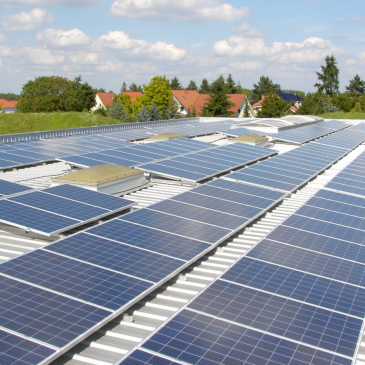Understanding Solar Power
You’ve made up your mind to switch solar power, but now you’re wondering, “How does solar power actually work?” Glad you asked! Understanding how it works is a good place to start when you’re thinking about how and to go solar. And lucky for you, it’s simpler than you think. Read on to learn more about the ways in which solar power works in a residential environment.
Solar Energy 101
One of the main methods of converting solar energy into solar power is direct or photovoltaic (PV) conversion. In this case, you would use solar panels (or solar PV) for generating electricity. A solar PV system consists of solar panels, an inverter, a meter, and a few other components such as mounting, cabling, etc.
Solar Panels
Solar cells are connected to make up solar modules, and multiple solar modules are interconnected to create a solar panel. The solar panels collect sunlight and convert it to direct current electricity (DC electricity). As long as rays are coming through, rain or shine, your panels are converting solar radiation into DC electricity. In order to use that electricity in your home, you’ll need an inverter.
Solar Inverters
An inverter is essential to any solar PV system; it is a device that takes the DC electricity produced by your solar panels and turns it into alternating current electricity (AC electricity). The installer you meet with should help you decide the best inverter for your unique solar power system. Solar electricity from the inverter goes to the electrical panel, and then into to your home.
Meters and Residential Solar Power Systems
Every solar PV system connected to the grid uses a bi-directional meter. When you take energy from the grid it goes forward, and as you produce energy, the meter goes back. So, if you generate more energy than you use, it flows back into the utility grid while you rake in credits to offset usage at night or in poor weather.
Connecting to the Grid – Net Metering and Solar Power
Net metering is a solar incentive that allows you to store energy in the electric grid, instead of having to have your own large storage batteries on hand in your garage or home. The amount of electricity your solar panels produce will vary throughout the year, so when they produce excess power, that energy is sent to the grid. In exchange, you can pull from the grid when your system is under-producing like during nighttime or in the winter.
This flow of energy between your solar system and the grid is tracked by your meter. When you produce more energy from solar power than you need, instead of getting a monthly bill, you will accumulate extra credits that you can draw from when you need them. Net metering, though it is not always offered in every state, is almost like free storage to homeowners who go solar, making it an all-in-one energy solution.
Solar Maintenance and Cleaning
Solar panels are durable and made to withstand rough weather. In the unlikely event of an issue, your system’s warranty will probably cover any damage that may happen. Solar panels don’t generally need to be cleaned. However, if you live somewhere with a lot of smog or dust, you may need to clean your panels to prevent a decrease in energy production.

